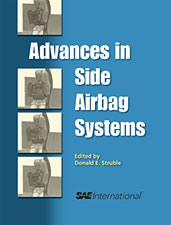Technical Paper
Analysis of a Dolly Rollover with PC-Crash
2009-04-20
2009-01-0822
The current capabilities of PC-Crash for rollover modeling are discussed and suggestions are made for how PC-Crash might be improved for modeling rollovers. ...This paper evaluates the use of PC-Crash simulation software for modeling the dynamics of a dolly rollover crash test. The specific test used for this research utilized a Ford sport utility vehicle and was run in accordance with SAE J2114. ...Next, the test was modeled using PC-Crash. The simulation was optimized to yield a reasonable fit with the actual test dynamics by changing the following parameters in PC-Crash: (1) the friction coefficient associated with each vehicle-to-ground impact; (2) the coefficient of restitution for vehicle-to-ground impacts; (3) the vehicle body stiffness; and (4) the vehicle suspension and damping.

